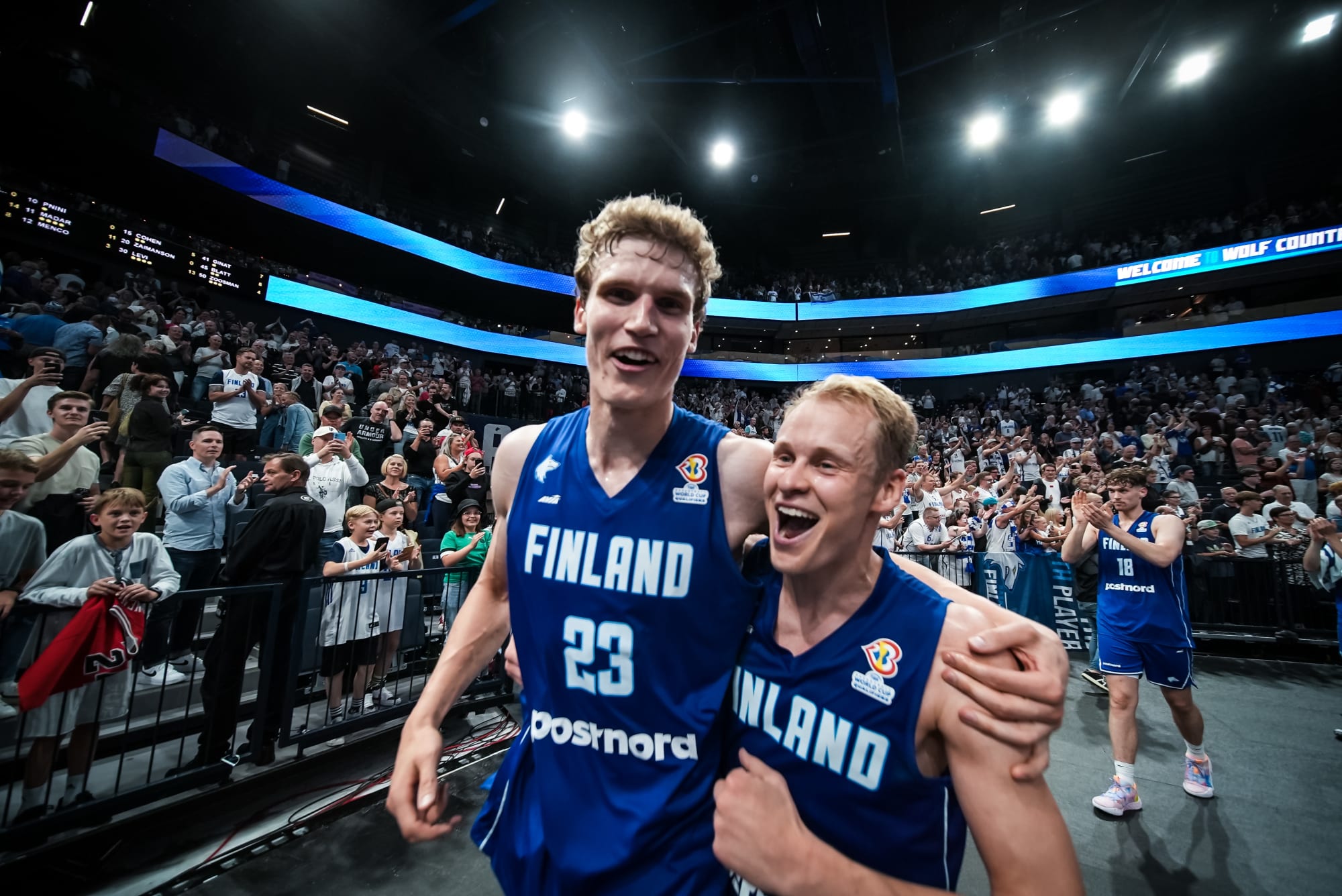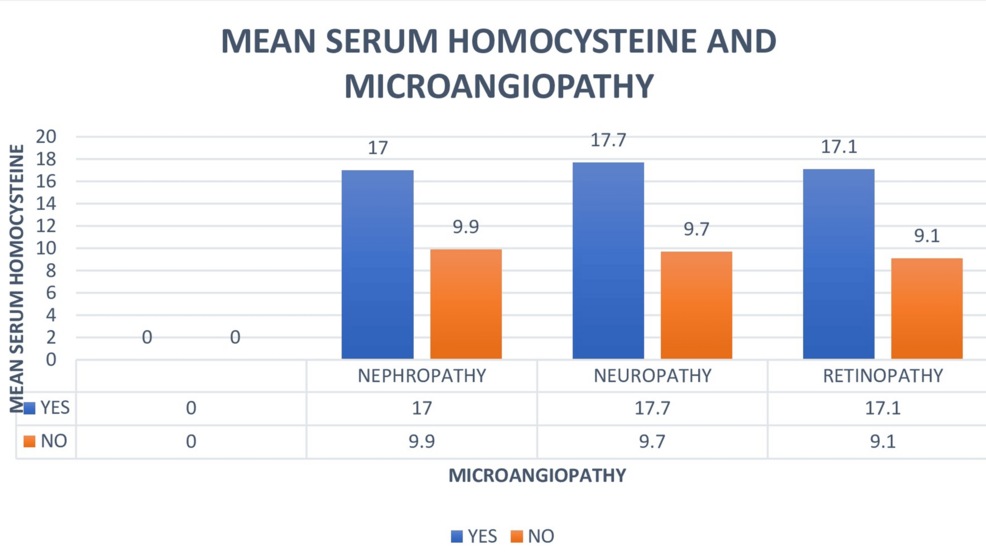- Five Things to Know About the 2025 Standard Portland Classic LPGA
- How to Watch the 2025 Standard Portland Classic LPGA
- The Standard Portland Classic KATU
- 2025 The Standard Portland Classic field: LPGA Tour players, rankings Golf News Net
- The Standard Portland Classic women’s golf tournament returns for 53rd year The Business Journals
Blog
-

Five Things to Know About the 2025 Standard Portland Classic – LPGA
-

Asia Cup 2025 Vice captaincy change on the cards Bumrah among front runners Reports
Shubman Gill, fresh from his stellar showing in the recent Test series against England, is emerging as the player in focus ahead of the Asia Cup T20 in the UAE next month. However, he may have competition from Axar Patel for the vice-captain’s role in the Indian squad. Pace spearhead Jasprit Bumrah is also set to feature in the tournament, though he is likely to be rested for the first Test against the West Indies in early October.
The Ajit Agarkar-led selection committee is expected to name the Asia Cup squad on August 19 or 20, depending on when the Centre of Excellence’s Sports Science team submits the medical report for all players. This includes skipper Suryakumar Yadav, who has resumed batting practice at the nets in Bengaluru.
While some tough selection calls lie ahead, the selectors are keen to maintain the continuity that has brought success since Suryakumar took charge as T20 captain. Axar Patel was the vice-captain during the recent home series against England, while Gill had the role when Suryakumar was first appointed full-time skipper in Sri Lanka last year.
“Abhishek Sharma is world’s No. 1 T20 batter in last ICC rankings. Sanju Samson has been fantastic last season with both bat and gloves. So it will certainly be a tough call but Shubman in current form (although in Tests) can’t be ignored. He had a good IPL also. Problem for selectors is, there are too many performers at the top of the order,” a BCCI source privy to developments was quoted saying to news agency PTI.
This surplus makes it difficult to slot in Yashasvi Jaiswal and Sai Sudharsan. KL Rahul, now India’s first-choice ODI wicketkeeper, is also unlikely to be considered as he does not bat in the middle order.
Second wicketkeeper race
Samson is almost certain to take the first keeper’s spot, leaving the second slot to be contested between Jitesh Sharma and Dhruv Jurel. Jurel featured in the last T20 series, while Jitesh impressed as a finisher during RCB’s IPL-winning campaign.
Injury update
Hardik Pandya remains India’s primary white-ball seam-bowling all-rounder, but Nitish Kumar Reddy is unlikely to recover from the injury he picked up against England. Shivam Dube, who made an impactful comeback in that series, is expected to retain his place. Axar Patel and Washington Sundar will provide spin-bowling all-round options.
Seam attack question
With Bumrah and Arshdeep Singh confirmed, the third seamer’s slot will likely go to either Prasidh Krishna—who took 25 wickets in the last IPL—or Harshit Rana, known for his heavy deliveries.
Likely Contenders for Asia Cup Squad:
Suryakumar Yadav (captain), Shubman Gill, Abhishek Sharma, Sanju Samson (wicket-keeper), Tilak Varma, Shivam Dube, Axar Patel, Washington Sundar, Varun Chakravarthy, Kuldeep Yadav, Jasprit Bumrah, Arshdeep Singh, Harshit Rana/Prasidh Krishna, Hardik Pandya, Jitesh Sharma/Dhruv Jurel.
Continue Reading
-

At least 73% of U.S. adults have fallen for online scams. How you can avoid the latest con
Online scammers continue to dupe a majority of American adults as they infiltrate virtual calendars and security systems meant to defend users against the poaching of personal information.
A recent survey of more than 9,000 U.S. adults by the Pew Research Center found that approximately 73% experienced at least one or more online scams or attacks.
The most common virtual cons were credit card fraud, online shopping scams and ransomware attacks — a type of malicious software that prevents you from accessing your computer files or system until a ransom is paid.
About 24% of those surveyed said they had received a scam email, text message or call that tricked them into giving away personal information.
An estimated 32% of respondents said they were victims of a scam within the last year.
It’s often said that older adults are more vulnerable to online fraudsters. However, in 2021, the Federal Trade Commission reported that Gen Z adults, millennials and Gen Xers, collectively between the ages of 18 and 59, were 34% more likely than adults who are 60 and older to report losing money to fraud.
These generational groups are getting tricked by online schemes that originate from a social media ad, an investment scam or fake job opportunities.
The latest phishing attacks, or attempts to acquire sensitive data, are happening through your online calendar, (Google or Outlook calendar), multi-factor authentication app and HTML attachments.
Evading online scams is proving to be a challenge, but cybersecurity experts say there are steps you can take to protect yourself.
Unsolicited calendar invites
Scammers are constantly finding new ways to lure you into unknowingly giving up your personal information and the calendar connected to your email account is one of them, said Iskander Sanchez-Rola, director of artificial intelligence and innovation for Norton.
Unlike traditional phishing scams such as an unwanted text or call that requires your engagement, this invitation automatically appears on your calendar without you approving or denying it.
Anyone can easily be fooled by this because it can confuse you into thinking you accepted the invitation at some point, Sanchez-Rola said.
The scam happens when you click on the invite to get more information.
A link in the invitation can lead you to a phishing webpage that is masquerading as a Zoom link, or it can prompt you to download malware that is disguised as a software update.
This con often targets work-related email accounts and corresponding calendar apps.
The warning signs of this scam include:
- The calendar invite is unsolicited.
- There are misspellings in the link or sender address associated with the calendar appointment.
- The invite is associated with work, but you’re the only person to receive it.
What you can do: Change the settings in your online calendar to prohibit automatic updates. Microsoft Outlook users can follow these online instructions to change their calendar settings; Google users can limit which invitations appear on their schedule by following these online instructions.
If you have any suspicions, don’t reply directly to the invite, said Derek Manky, chief security strategist and global vice president of threat intelligence at Fortinet.
“Instead, send an email to your trusted contact from that organization asking if they have confirmed the meeting and request further details,” Manky said.
Multi-factor authentication scam
A multi-factor authentication app, also known as a “two-step verification,” is an application on your phone that provides you with a code or a “yes or no” prompt to verify that you’re accessing an account that’s linked to the authenticator.
“Multi-factor authentication attacks have been happening for well over a decade,” Manky said. “They just frequently take on new forms, or target new platforms such as the authenticator app.”
A scam occurs when you’re receiving multiple notifications from the authentication app even though you didn’t request verification.
“This scam is all about wearing you down to the point of clicking an unknown notification and accidentally providing your personal information,” Sanchez-Rola said.
The warning signs of this scam include:
- The authentication app is requesting verification or providing you with a verification code you did not request.
- The authentication app is sending you several notifications in a row even though you did not prompt the app.
What you can do: If you’re getting a string of authentication app notifications, pause before you click.
“Approving a login you didn’t request is like handing your keys to a stranger,” Sanchez-Rola said. “You just don’t do it.”
A safer way to use an authentication app — such as 2FAS, Aegis Authenticator, Microsoft Authenticator, Stratum or Google Authenticator — is to use one that provides you with a verification code. Don’t use an app that sends a notification because that’s how a scammer can pressure you into providing your login information.
Another step in protecting yourself is changing your passwords frequently, as it reduces the shelf-life for the ones that are stolen and sold, Manky said.
Emails with unknown HTML attachments
An email with an unknown HTML attachment can redirect you to a phishing webpage or prompt you to download malware.
It’s the oldest technique in the book but it’s still commonly used today, Manky said.
“HTM/HTML files contain code that can be used in a variety of ways, including executing malicious scripts, for example Javascript, that could drop an information stealer on the system,” he said. “Likewise, they could be used to launch a phishing page to harvest credentials.”
Fraudsters will try to use trusted names or services that are of daily use to you.
“If an email is unsolicited, the end user should always question the identity of the emails being sent,” Manky said.
The warning signs of this scam include:
- The sender of the email is an unknown contact.
- The attachment within the email is unsolicited and looks suspicious.
What can you do: Always exercise caution before opening any attachments in an email, Manky said.
Look for typosquatting in the URL of the attachment. Typosquatting is when domain names on the URL have a small variation from the legitimate one, Manky said.
Continue Reading
-

Molbio Diagnostics supports Philippines to accelerate TB elimination drive
Molbio Diagnostics supports Philippines to accelerate TB elimination drive
August 11, 2025 | Monday | News
Currently there are 68 Truenat devices deployed across the Philippines
The Philippines, one of the top five countries with the highest tuberculosis (TB) burden, faces the challenge of detecting and treating an estimated 190,000 missed TB cases each year.
In line with the United Nations target to find and treat 2.1 million TB cases in the country by 2027, the Philippines Health Department is stepping up its commitment to strengthen community-level screening and diagnosis through India-made innovative Truenat systems and ultra-portable X-ray devices.
Currently, there are 68 Truenat devices deployed across the Philippines, enabling rapid, multi-disease molecular testing for TB, HIV, HPV, Hepatitis B & C, and more. A pilot in the Bantayan Islands demonstrated the transformative potential of the platform, achieving a remarkable 1008% increase in TB case detection.
Molbio’s WHO-endorsed and ICMR-approved solutions for TB detection, address critical barriers in the Philippines, such as geographic isolation, underutilisation of laboratory testing, and limited access in rural and island communities. The recent approval of the PRORAD Atlas Ultraportable X-ray by the Philippines FDA paves the way for integrated, end-to-end TB screening and diagnosis, ensuring immediate linkage to treatment.
Health Secretary of Philippines Dr Theodore J Herbosa said, “As we intensify our efforts to combat tuberculosis (TB) in the Philippines, the collaboration with India stands as a beacon of innovation and partnership. The integration of India’s indigenous diagnostic technologies, such as the Truenat® system, into our healthcare infrastructure is pivotal. Truenat®, known for its rapid and reliable molecular diagnostic capabilities, allows for swift and accurate TB screenings, enhancing our capacity to manage and eventually eliminate TB within our borders, especially in remote areas. This collaboration is part of a broader, strengthening bilateral relationship between India and the Philippines, which now exceeds $3 billion in trade. India is a key supplier of pharmaceuticals, medical equipment, and diagnostic technologies, contributing significantly to our healthcare advancements.”
With a portfolio spanning more than 40 tests for infectious and non-infectious diseases, Molbio combines portability, speed, and accuracy to strengthen public health systems worldwide. Molbio’s ongoing studies include a multi-country project funded by the R2D2 TB Network that is exploring novel tongue swab–based molecular diagnostics to improve TB detection among children and people living with HIV/AIDS.
“By bringing testing closer to communities—whether on remote islands or underserved rural areas—we can close the gap in TB detection and treatment, helping the Philippines achieve its elimination targets. We are committed to strengthening the fight against infectious diseases across the globe, helping countries build more resilient and responsive health systems,” said Shiva Sriram, President of Molbio Diagnostics.
Continue Reading
-
Booking Health Unveils New Study: Role of Immunotherapy in
Langenfeld, Germany, Aug. 11, 2025 (GLOBE NEWSWIRE) — Booking Health, a global leader in medical treatment coordination, today unveiled a new study titled Role of Immunotherapy in Extending Life Expectancy for Stage 4 Cervical Cancer Patients. The report outlines how cutting-edge immunotherapy is reshaping care for women with advanced cervical cancer, offering new pathways to longer survival and improved quality of life, particularly in cases resistant to standard treatments.

Cervical Cancer
Immunotherapy is redefining how doctors treat women diagnosed with stage 4 cervical cancer – offering hope where traditional treatments often fall short. According to global cancer statistics provided by the World Health Organization, cervical cancer is still ranking as the fourth most frequently diagnosed cancer among women worldwide, with over 350,000 deaths reported in 2022 alone. Therefore, the need for more effective therapies is urgent.
Chemotherapy and radiation therapy remain standard for locally advanced and metastatic cervical cancer. However, they often come with harsh side effects and limited long-term benefit – especially in recurrent or PD-L1-positive cases. This is where immunotherapy is beginning to transform the way we treat cervical cancer.
By training the immune system to recognize and destroy cancer cells, this innovative approach is extending survival, improving quality of life, and reshaping the future of gynecologic oncology, according to the American Cancer Society. Leading the way in connecting patients with advanced treatment abroad is Booking Health, a global medical coordination platform that offers access to advanced cervical cancer treatment in the best European clinics.
Why Is Stage 4 Cervical Cancer So Hard to Treat?
Stage 4 cervical cancer is difficult to treat because it involves metastatic disease, where cancer has spread beyond the pelvis to distant organs, making it less responsive to traditional therapies such as chemotherapy and radiation. In many cases, the disease becomes persistent or recurrent, with fewer effective treatment options available, as reported by the National Cancer Institute.
Types of Advanced Cervical Cancer
Understanding the different stages helps clarify why some cases are more complex than others:
Term Definition Treatment Challenge Locally advanced cervical cancer Cancer has spread beyond the cervix to nearby tissues (e.g., vagina, parametria) but not to distant organs Often treated with chemoradiation, but recurrence risk remains Recurrent cervical cancer Cancer returns after a period of remission May resist previously used therapies and require new approaches Metastatic cervical cancer Cancer spreads to distant organs like lungs, liver, or bones Hard to target; systemic therapies often have limited success Most Common Cervical Cancer Types
-
- Squamous cell carcinoma – accounts for 80-90% of cases; originates in the ectocervix
-
- Adenocarcinoma – about 10-20% of cases; arises from glandular cells in the endocervix
- Adenosquamous carcinoma – a rarer subtype with mixed features
As reported by Cancer Research UK, each type may behave differently in terms of spread, immune response, and treatment sensitivity.
Limitations of Traditional Treatments
Standard treatments for advanced cervical cancer include:
-
- Chemotherapy: Often platinum-based; effectiveness diminishes over time;
-
- Radiation therapy: Can control local disease but may not impact distant metastases;
- Systemic therapies: Cause significant side effects, with limited survival benefit in persistent cervical cancer.
Moreover, the American Cancer Society reports that patients with persistent or metastatic disease often experience poor outcomes, with 5-year survival rates below 20% in stage 4 cases.
As such, gynecologic oncology experts have increasingly turned to immunotherapy to improve response rates and extend survival.
What Is Immunotherapy and How Does It Work for Cervical Cancer?
Immunotherapy for cervical cancer stimulates the body’s own immune system to recognize and destroy cancer cells by targeting specific immune pathways. This approach is especially useful for patients with PD-L1–positive, recurrent, or metastatic cervical cancer who may not respond well to conventional treatments.
Approach Description Relevance to Cervical Cancer Immune checkpoint inhibitors Block proteins (PD-1, PD-L1) that prevent immune cells from attacking cancer Reactivates exhausted T cells to fight cervical cancer cells Monoclonal antibodies Lab-made antibodies designed to target specific tumor markers Some bind PD-L1 or deliver cytotoxic agents directly to tumor cells Cancer vaccines Stimulate immune response to HPV or tumor-associated antigens Promote lasting T cell activation and memory Adoptive T cell therapy Infuse engineered T cells that can attack tumor cells Under investigation for recurrent cervical cancer The PD-1/PD-L1 Pathway
-
- PD-1 is a receptor on T cells that regulates immune response
-
- PD-L1 is often overexpressed on cervical cancer cells
-
- When PD-L1 binds to PD-1, it “switches off” the immune attack
- Checkpoint inhibitors block this interaction – reactivating T cells to destroy cancer cells
Why It Matters
-
- Many cervical tumors exhibit high PD-L1 expression, making them ideal candidates for immunotherapy.
-
- Successful treatment leads to greater T cell infiltration into tumors, enhancing immune surveillance.
- Patients often experience improved immune response and more durable control of the disease than with chemotherapy alone.
This therapeutic shift reflects a broader move toward personalized medicine in gynecologic oncology, targeting tumor-infiltrating lymphocytes and immune checkpoints rather than relying solely on cytotoxic drugs.
Findings from the Latest Clinical Trials
Recent phase III clinical trials have shown that combining immunotherapy with standard chemotherapy – or using it as a second-line option – can significantly extend survival and delay disease progression in patients with recurrent or metastatic cervical cancer.
These studies demonstrate that there has occurred a major shift in how advanced cervical cancer is treated, providing hope to patients who previously had limited options after conventional therapies failed.
Highlights from the Trials
-
- Patients receiving immunotherapy lived significantly longer than those on chemotherapy alone.
-
- Survival benefit was observed regardless of PD-L1 status, especially in recurrent cases after platinum-based treatment.
-
- Delays in disease progression gave patients more time with better quality of life.
- Immune checkpoint inhibitors helped reactivate the immune system’s ability to target and destroy cervical cancer cells.
Clinical Trial Treatment Type Median Overall Survival (OS) Disease Control Outcome Notes Phase III Study Immunotherapy + Chemo Up to 28.6 months vs 16.5 months Longer survival in all groups Strongest benefit in PD-L1+ patients Randomized Phase III Trial Immunotherapy (2nd-line) 11.7 months vs 8.5 months Benefit seen in all PD-L1 levels Works even after chemo failure * Both studies confirmed survival advantages without significantly higher severe side effects compared to chemotherapy alone.
What This Means for Patients
For women with recurrent, persistent, or metastatic cervical cancer, these results signal a new standard of care. Immunotherapy is not only more targeted than traditional therapies but also better tolerated, offering:
-
- A longer window of disease control (median progression-free survival extended);
-
- Improved quality of life with fewer systemic side effects;
- Hope for those who did not respond to chemotherapy or radiation.
This also opens the door for future therapies involving antibody drug conjugates, personalized immune profiling, and combination treatments that utilize both the immune system and conventional medicine. Today, cervical cancer cohorts worldwide are benefiting from a more individualized, immune-driven approach that redefines what is possible after recurrence or metastasis.
Who Benefits Most from Immunotherapy in Cervical Cancer?
Immunotherapy is most effective for patients with PD-L1-positive, recurrent, or metastatic cervical cancer, particularly when standard treatments like chemotherapy or radiation therapy have failed, as previously mentioned. These patients often have limited options, and immunotherapy provides a targeted approach that can activate the immune system to attack tumor cells more effectively.
Common Eligibility Criteria for Immunotherapy
Patients who may benefit from immunotherapy typically meet one or more of the following criteria:
-
- PD-L1 expression ≥1% (as determined by tumor biopsy);
-
- Recurrent or metastatic cervical cancer following standard treatment;
-
- Persistent squamous cell carcinoma that does not respond to initial therapies;
-
- Evidence of T cell infiltration or active immune cell presence within the tumor;
- No contraindications for immune checkpoint blockade (e.g., autoimmune diseases).
Histology Type Prevalence Response to Immunotherapy Squamous Cell Carcinoma ~80-90% Better overall immune response; more PD-L1 expression; strong T cell infiltration Adenocarcinoma ~10-20% Slightly lower PD-L1 expression; emerging data still promising Adenosquamous/Mixed <5% Limited clinical data; under investigation While both subtypes may benefit, squamous cell carcinoma tends to respond more favorably due to its immunogenicity and higher prevalence of immune markers like PD-L1.
Why This Is Important
Understanding which patients are most likely to respond helps oncologists personalize therapy, avoid unnecessary toxicity, and improve overall outcomes in metastatic cervical cancer patients. As clinical trials continue to evolve, biomarkers like PD-L1, tumor-infiltrating lymphocytes, and even genomic profiling are playing a larger role in guiding treatment selection.
What Are the Current Limitations and Side Effects of Immunotherapy?
While immunotherapy is an innovative option in cervical cancer treatment, it is not without limitations. Not all patients experience a positive immune response, and treatment can lead to side effects caused by overstimulation of the immune system.
Main Limitations of Immunotherapy for Cervical Cancer
-
- Variable response rates: Only patients with specific tumor profiles (e.g., PD-L1-positive tumors or high T cell infiltration) tend to respond.
-
- Delayed response: Unlike chemotherapy, benefits may take weeks or months to appear.
-
- Immune hyperactivation: Some patients may develop autoimmune-like reactions when the immune system attacks healthy tissue.
-
- High costs: Immunotherapy is expensive, and coverage varies widely by country and provider.
- Limited access: Not all regions offer advanced immune-based therapies or diagnostic testing.
Side Effect Type Description Frequency Colitis Inflammation of the colon causing diarrhea Moderate Thyroiditis/Hypothyroidism Immune attack on the thyroid Common Dermatitis or skin rash Immune-related skin inflammation Common Fatigue and joint pain General inflammatory response Mild to moderate Pneumonitis Lung inflammation (rare but serious) Rare Cleveland Clinic highlights that these side effects are often immune-related and differ from those of chemotherapy, which typically causes nausea, hair loss, and bone marrow suppression. Most immune-related reactions are manageable with corticosteroids or immunosuppressive agents when diagnosed early.
Importance of Tumor Profiling and Biomarker Testing
Before initiating immunotherapy, tumor profiling is crucial. Tests that assess PD-L1 expression, tumor mutational burden, and immune cell markers help determine whether a patient is a good candidate. This ensures that patients treated are those most likely to benefit from therapy while minimizing unnecessary risks.
Why Are More Patients Going Abroad for Cervical Cancer Immunotherapy?
Many cervical cancer patients choose to go abroad for immunotherapy because of faster access, broader treatment options, and advanced clinical expertise – especially in countries known for innovation in gynecologic oncology. In many parts of the world, patients face long wait times, outdated systemic therapies, or limited access to next-generation immune system-based treatments.
This is especially critical for women with advanced or recurrent cervical cancer, where timely intervention can directly affect survival and quality of life. In contrast, specialized cancer centers in countries like Germany offer accelerated treatment pathways, advanced diagnostics, and access to experimental options not yet widely available elsewhere.
Primary Reasons Patients Travel Abroad for Treatment
-
- Limited access at home: In some countries, immune checkpoint inhibitors and personalized immunotherapy are not yet standard care – or are cost-prohibitive without insurance support.
- Delays in diagnosis or therapy: Long waitlists for oncology consultations or biopsy testing can result in treatment delays that worsen outcomes.
Patients who choose to treat cervical cancer abroad often report improved outcomes, better coordination, and more comprehensive care – especially when guided by experienced facilitators like Booking Health.
From Research to Results: How Immunotherapy Extends Life Expectancy
Recent clinical advances highlight the growing role of immunotherapy in improving life expectancy for patients with stage 4 cervical cancer. Immune checkpoint inhibitors and other immune-based treatments are showing encouraging results, particularly for recurrent, metastatic, and PD‑L1‑positive cervical cancers, where traditional chemotherapy offers limited benefit. By stimulating the body’s own immune system to recognize and attack tumor cells, these therapies have been linked to longer survival and improved progression-free outcomes in international studies.
Access to such innovative care remains uneven, prompting patients to seek specialized oncology centers abroad. Through coordination platforms such as Booking Health, individuals are able to connect with leading hospitals in Germany and other countries that offer advanced cervical cancer immunotherapy programs. These multidisciplinary approaches combine personalized treatment planning, modern diagnostics, and targeted immune modulation to address late‑stage disease. As immunotherapy research continues to expand, it represents a significant shift in the management of advanced cervical cancer, giving more women a realistic chance at extended survival and an improved quality of life.
Key Takeaways: Immunotherapy’s Impact on Advanced Cervical Cancer
-
- Immunotherapy offers hope for women with stage 4 cervical cancer, especially when other treatments have failed.
-
- It works by strengthening the immune system to recognize and eliminate cancer cells more effectively.
-
- Most effective in patients with PD-L1-positive, recurrent, metastatic, or invasive cervical cancer.
-
- Recent phase III clinical trials show longer survival and improved median progression-free survival compared to chemotherapy alone.
- Booking Health connects international patients with leading European hospitals that specialize in cervical cancer immunotherapy and personalized care.
These breakthroughs represent a major advancement in the treatment of metastatic cervical cancer – delivering not only longer survival, but also a significantly improved quality of life. To explore your personalized treatment options, contact Booking Health today and take the next step toward advanced cervical cancer care.

Side_Effects
About Booking Health
Booking Health™ is the international platform for rapid access to innovative treatments in the world’s leading certified clinics. Our network features over 250 top-tier hospitals across the globe, all distinguished by the exceptional levels of medical accreditation and expertise. By arranging care with the help of Booking Health company, you benefit from comprehensive medical support based on the latest innovations and personalized coordination. We offer cost saving up to 70% compared to direct booking via clinics — all without compromising on quality. Choosing Booking Health means more than just acquiring access to innovative world-class therapy – it means saving valuable time knowing that every detail is handled by professionals. Headquartered in Bad Hönningen, Germany and officially registered in Düsseldorf under HRB 106466, Booking Health proudly consults patients from over 75 countries for over a decade, offering services in 11 languages.
Press inquiries
Booking Health
https://bookinghealth.com/
Lena Hanten
marketing@bookinghealth.com
Continue Reading
-
-

Jean-Luc Godard Confidant Fabrice Aragno Sets Locarno Title ‘The Lake’
Swiss filmmaker Fabrice Aragno (“Dimanche”) who served as Jean-Luc Godard’s multi-faceted collaborator and creative confidant for the better part of two decades, heads to Locarno for the world premiere of his latest feature “The Lake” (“Le Lac”).
It competes for Locarno’s top Golden Leopard in the fest’s main International Competition, bowing on Aug. 14.
Turning the minutia of life’s fleeting encounters into displays of visceral emotion, the project sees the filmmaker surrender further to the scene. Unburdened from heavy dialogue, the landscapes speak volumes and the middle-aged protagonists are left stoic, only their heavy expressions and agile frames holding the space between the tangible and divine as they handle a rugged five-day sailing race on a large lake.
“I entered the world of cinema because I see it, and feel it, as an art form at the crossroads of painting and photography (the image), music (sound and silence), dance (movement) and poetry (for the silence it also evokes). It seems to be the ideal art form for expressing the inexpressible,” Aragno told Variety.
“Before using words, I see an image that can be 12 metres wide and six metres high, with eight audio tracks, and darkness, and silence. The fact that we can bring in captured reality and turn it into a composition, that we can film faces like landscapes and landscapes like characters, I leave room for that. Everything is over-said, decried, crushed by words and knowledge — that we no longer see. It’s not bad to allow time to think without dictation,” he adds.
An artist who believes in serendipity, Aragno admits the project built over time as opportunities gave way to the narrative structure of the film. Ideas and relationships flourished, coaxing him to fully develop the project.
“In 2013, I had the opportunity to create a video work for a major exhibition in Switzerland that brought together painters who’d painted Lake Geneva. From Turner to Courbet, Vallotton, and even Dürer. They wanted to include filmmakers, and therefore Jean-Luc Godard,” he explained.
“Working on these paintings and facing the majestic lake, I was struck by the contrast between what it expresses through what we see (here, through the prism of the painters’ sensibilities) and what it resonates within us, in our invisible interiors. I found this relationship surprising. I called the video work I was doing ‘The Invisible’ precisely because feelings, which are invisible, are expressed by what we see in front of us, the ‘visible’ of the lake and its visible variations, of our invisibilities. I then thought it would be interesting to really go into this visible realm to express our invisible feelings,” he continued.
The scenic appeal is undeniable, nature’s majestic prose both frames and dwarfs the tumultuous affectations of the characters. Electric rose gold sunsets play opposite mystifying fog-laden mountain ranges and dense clouds that harbor torrential downpours, while French actress Clotilde Courau (“In The Shadow of Women”) and Swiss professional sailor, Bernard Stamm, brave inward storms with unshakeable grace.
The director speaks to the breadth of their talents with vigor, having met Courau at Locarno 10 years ago, and admits his leads made a compelling duo in the film — which counts on their prowess to assist the images they sail through.
“They found each other, rediscovered each other, in front of our cameras! Neither actress nor sailor, but two beings, alone, together, caught up in the torments of life, of time, of the loss of things, the return of the essentials,” he relayed.
“The Lake” is produced by Casa Azul Films, who represent world sales. It is co-produced by public broadcaster Radio Télévision Suisse (RTS).
Continue Reading
-

Cate Blanchett on ‘Disclaimer’ Notes, ‘Squid Game’ Cameo
Cate Blanchett is no stranger to playing complicated, misunderstood women. But in Apple TV+’s “Disclaimer,” Alfonso Cuaron’s seven-part series about a documentarian whose deepest, darkest secrets come to light in a novel written by an unreliable narrator, the two-time Academy Award winner, and now three-time Emmy nominee, was tasked with embodying an embattled woman who loses control of her own story.
“The challenge for me, and I suppose the painful reality, was that when you play a central character in a narrative, you invite an audience not necessarily to have empathy with you, but you invite them into your character’s point of view,” Blanchett says from her home in London. “Disclaimer” was the “antithesis” of that conventional wisdom, forcing Blanchett to sit in others’ snap judgments of her character, Catherine Ravenscroft, until she finally reclaims her story in the harrowing finale.
“I, as an actor and as a character, was put inside a very small box that was slowly having the air squeezed out of it until I finally got to speak,” explains Blanchett. “Alfonso has impeccable judgment, but there was a conversation at one point where a certain scene wasn’t going to be in the final edit. And I said, ‘I think it’s really important that the people hear that perspective, because we’ve asked them to sit through Catherine’s silence. She has to say why she didn’t speak. Otherwise, we are robbing the audience of the full stop.’”
At the height of the COVID-19 pandemic, Cuarón approached Blanchett about collaborating on an adaptation of Renée Knight’s 2015 novel, which he had read before making “Roma.” It would be expanded into seven episodes — or, as the filmmaker likes to put it, seven “chapters.” After signing on as the star and an executive producer, Blanchett became heavily involved in each step of the production. But, much like the audience, the actor found herself being confronted with her “own immediate judgments of characters’ motivations.”
“Alfonso was really engaged in the fact that there’s this war at the moment — and it does feel like a battle, actually — for a singular truth, which I think is a really dangerous and rather pointless exercise, because truth is such a complex thing,” Blanchett says. “We all know it’s made up of so many different perspectives, and the ones that we lean into are often the most pre-digested, pre-masticated ones that are really easy to swallow and somehow make us feel like we’re good people and the guardians of all knowledge and morality. We don’t like those truths that make us feel uncomfortable about ourselves.”
Cate Blanchett as Catherine Ravenscroft in “Disclaimer”
Courtesy of Apple TV+“Disclaimer” specifically forces viewers to confront their own biases and the cultural vilification of so-called “bad” women. “I think if you go back and watch it a second time, there’s a crude picture of Catherine that the people were assembling for themselves that didn’t have a lot to do with who she was or what she did, or the impact that she was having in the room,” says Blanchett.
The truth was hiding in plain sight. For the first six episodes, viewers were led to believe that Catherine, while vacationing in Italy years earlier, had initiated a self-absorbed affair with a 19-year-old stranger named Jonathan (Louis Partridge), who ultimately died after saving Catherine’s young son from drowning in the ocean.
In the finale, Catherine finally confronts Jonathan’s father, Stephen (Kevin Kline), whose late wife, Nancy (Lesley Manville), had written the novel based on a false perception of her son’s final days. But what really happened was that the night before his death, Jonathan had broken into Catherine’s hotel room, forced her to pose for nude photographs, and then violently sexually assaulted her.
“I think to know that you were moving through and unpicking an audience’s often intractable judgments of what had gone on was a profound relief,” says Blanchett, who recalls feeling markedly lighter after shooting that extended, 40-page monologue all in one take.
The devastating final twist was a secret that Blanchett fought to keep, even if it made press next to impossible. “There are many tangential conversations I would’ve loved to have had about what happens when you sit with abuse, and the various different ways that people bury this [trauma],” she says. “The courage that it takes still in this day and age to stand up and say it, even after you’ve been sitting on that shame, and the attendant shame that comes for people who are victims of abuse — I feel like it would’ve been great to use the series in a way as a launchpad to talk about that stuff. You can’t make that stuff happen, but I’ve had quite a few people stop me in the proverbial supermarket to talk about that.”
While she is most renowned for headlining films, Blanchett says she is “absolutely” looking to venture further into television. In 2020, she earned her first two Emmy nominations for FX’s “Mrs. America,” as both an actor and producer. Having always been actively involved in the development of a show, she is now “particularly keen” to join a series “that is fully formed.”
Blanchett may get her wish sooner rather than later. Last year, she filmed a top-secret cameo for the final scene of Netflix’s “Squid Game,” in which she played an unnamed American recruiter who the Front Man (Lee Byung-hun) acknowledges and sees playing ddakji with a homeless man in a back alley. The offer “came out of the blue,” and Blanchett was given little context.
“Because it’s such a cult series and they were shooting in L.A. of all places, everyone was on a need-to-know basis,” she recalls. She didn’t even do a costume fitting; the production asked her to bring her own suit. “I got a couple of storyboards. I had to [learn to] play the game very quickly. I had to practice and practice. I knew there were four or five setups that they were going to do, and I knew what they needed from every shot, and then I was given the sides. But it was one of the more mysterious jobs.”
The surprise casting of a movie star of Blanchett’s caliber suggests that Netflix is exploring new ways to keep the IP alive. Does this mean she is open to leading a potential English-language spinoff or sequel to “Squid Game”?
“I am wildly open to anything,” Blanchett says, leaning back in her chair with a smirk. “And in a world that is so beautifully, magically created like that, for sure. They’re amazing world-builders, and that series has been eaten alive. I don’t think there’s a corner of the globe that it hasn’t touched in some way.”
While there has been speculation that David Fincher, Blanchett’s “The Curious Case of Benjamin Button” director, has pitched an English-language series set in the “Squid Game” universe, Blanchett doesn’t have an answer. “I mean, I’d love to work with David again. It’s been ages. But no, I don’t know anything more than you do. I’m not being coy. I really don’t.”
Throughout her career, Blanchett insists she has always been more interested in choosing her various collaborators than playing a specific kind of character, and “Disclaimer” was no different. “I guess that’s why I’ve played characters big and small in lots of different genres,” she says. “It’s more access to different audiences that I am really interested in, because you catch an audience on a different rhythm when they’re at home watching something, or when they’re on the train watching something on a smaller screen, or when they’ve come to the theater. In the end, what I seek is that different connection with them.”
Continue Reading
-

Xander Schauffele JJ Spaun Qualify for 2025 U.S. Ryder Cup Team
By Ryder Cup Digital On August 11, 2025 17:39 UTC
J.J. Spaun and Xander Schauffele have joined Scottie Scheffler in earning automatic qualification on the U.S. Team for the 2025 Ryder Cup at Bethpage Black.
Spaun will be making his Ryder Cup debut after a banner year that included a U.S. Open Championship, three runner-up finishes and six top-10’s on the PGA TOUR. THe 34-year old from Los Angeles, California, sealed his spot with a runner-up finish in the FedEx St. Jude Championship that moved him to No. 2 on the U.S. Ryder Cup Team points list.
Schauffele will be making his third-straight Ryder Cup appearance when he joins Captain Keegan Bradley’s team at Bethpage Black from Sept. 26-28. A two-time Major Champion, Schauffele claimed the 2024 PGA Championship and Open Championship. The California native has a career Ryder Cup record of 4-4-0.
“The Ryder Cup is unlike any event in golf, and I’m incredibly proud to qualify for my third U.S. Team appearance,” Schauffele said. “Bethpage Black will undoubtedly provide a challenging test as we seek to reclaim the Cup against what is sure to be a skilled European Team. I cannot wait to get to New York and give everything I’ve got to help our team succeed.”

Three automatic qualification spots remain open and will be determined following the BMW Championship in Baltimore, Maryland, this week. Russell Henley (4th, 11,904.82 points), Bryson DeChambeau (5th, 10,774.98 points) and Harris English (6th, 10,439.55 points) currently hold the final three automatic spots, with Justin Thomas (7th, 10,347.59), Collin Morikawa (8th, 9,929.77 points), Ben Griffin (9th, 9,304.76 points), Captain Bradley (10th, 8,103 points), Maverick McNealy (11th, 7553.65 points) and Andrew Novak (12th, 7,230.48 points) rounding out the top 12.
Bradley will make his six remaining Captain’s Picks live on RyderCup.com on Wednesday, August 27th.
Continue Reading
-

Markkanen on fire again as Finland claim historic 500th win
The official EuroBasket app
Download Now
ESPOO (Finland) – Lauri Markkanen dropped 31 points as Finland dismissed Belgium 92-74 to seal their 500th international win emphatically.
Markkanen added 5 rebounds and 2 steals to his stat line to secure Finland’s second win in preparation for FIBA EuroBasket 2025.
This game also held significant meaning for veteran Sasu Salin, as it marked the 15th anniversary of his debut with the Finland national team. He added 17 points in the same venue where he started his journey with the Susijengi.
Hans Vanwijn led Belgium with 15 points as they dropped their third game in preparation for EuroBasket, where they will be in Group D in Katowice, Poland.
Who is playing at FIBA EuroBasket 2025?
Roster tracker: Who is playing at FIBA EuroBasket 2025?
Tracker: Preparation games for FIBA EuroBasket 2025
Top performers: Markkanen was outstanding once again for Finland, dropping a whopping 31 points to back up to 48 against the same opponent in the last game. Salin brought up his 15th year with a stellar performance as well with 17. For Belgium, Vanwijn impressed with 15 points, going 5-for-13 from the floor, to go along with 5 rebounds and 4 assists.
Related Articles
Unstoppable: Markkanen erupts for career-high 48 points
Up next: Finland will head to Sosnowiec, where they play Poland on Sunday, August 17, in the first of two games. Belgium travels home next, as they play Great Britain in Ostend on Friday, August 15.
Related Articles
Group B: Who is playing FIBA EuroBasket 2025 in Tampere?
Group D: Who is playing FIBA EuroBasket 2025 in Katowice?
500 up for Finland
This latest victory also brought up the 500th win for Finland as they prepare for their 18th appearance at EuroBasket this summer.
From their humble beginnings in 1939 to now, Finland has grown into one of international basketball’s most promising nations. A seventh-place finish at EuroBasket 2022, backed up by two appearances at the FIBA Basketball World Cup, has showcased their growth.
They aim to secure a best-ever finish this year, beginning in their own backyard in Tampere.
Milestone
Event
Game
Score
1st international game
FIBA EuroBasket 1939
Finland vs France
73-11 (L)
1st win
FIBA Basketball World Cup 1950 Qualifiers
Finland vs Austria
38-34 (W)
50th win
Friendly, January 15, 1961
Sweden vs Finland
54-46 (W)
100th win
Friendly, April 8, 1966
Finland vs Norway
109-39 (W)
200th win
Friendly, January 7, 1979
Finland vs Bulgaria
101-94 (W)
300th win
FIBA EuroBasket 1993 Qualifiers
Finland vs Albania
89-81 (W)
400th win
Friendly, July 31, 2009
Estonia vs Finland
90-72 (W)
500th win
Friendly, August 11, 2025
Finland vs Belgium
92-74 (W)
FIBA
Continue Reading
